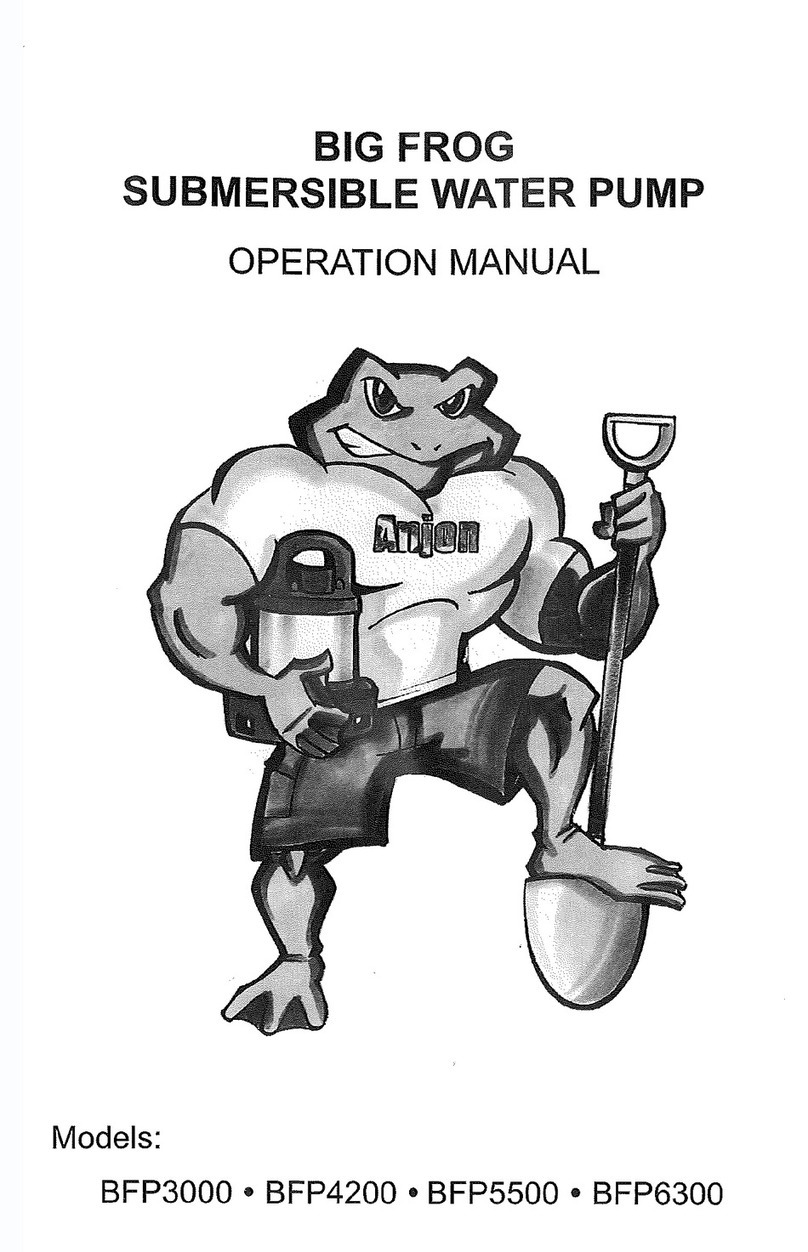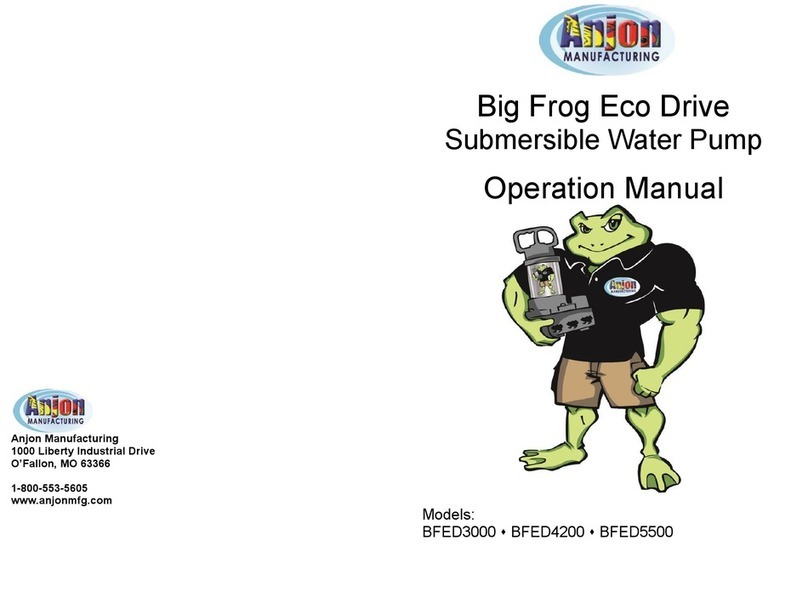©2017 Anjon Manufacturing. All Rights Reserved 5
Installation of LifeLine Air Compressor
Make sure you have the proper installation conditions. The compressor needs to be installed in a
clean, dry location. Mount the compressor to a stable, rigid operating surface protected from dirt and
moisture and from the outdoor environment such as rain, snow and elevated from flood-prone areas
in a well-ventilated enclosure. The compressor must be installed no closer than 12” from a wall or
another compressor to allow ample circulation of air across the compressors cylinders and heads
Ensure the compressor is clear of any objects that may impede or block air flow, and avoid areas for
installation that are subject to excessive dirt or dust. Cumulated dirt /dust will result in the blocking of
air flow. Adequate ventilation and cooling air flow across the compressor must be provided to keep
the compressor from overheating and causing premature damage. The thermal protector within the
motor will interrupt the electrical current when the motor overheats. Ambient Air temperature
(temperature readings 4” away from any surface of the compressor) must not exceed 104°F (40°C).
Remove plugs as necessary from the Intake and Exhaust ports. Connect your tubing with air fittings
that are the same size, or larger, than the products threaded ports (refer to the recommended hose
and required fittings specifications). Be sure to connect the intake and exhaust plumbing to the
correct inlet and outlet ports. Ports will not support plumbing without proper installment of plumbing
fittings into the ports on your compressor.
Electrical Requirements
Make sure that the voltage output from your power supply complies with that listed on label on the
compressor. All cords with plugs must be plugged into a GFCI outlet that is properly installed and
grounded in accordance with all local codes and ordinances. It is your responsibility to contact a
qualified electrician and assure that the electrical installation is adequate and in conformance with all
national and local codes and ordinances.
A hard-wired installation is not recommended and never operate this air compressor while connected
to an extension cord; both will result in the warranty being voided!
Operation
It is your responsibility to operate this compressor at the recommended pressures and acceptable
ambient temperatures. Do not start the compressor against a vacuum or a pressure load. Follow this
procedure for startup of a new installation, after changes to an existing installation have been made,
and/or after service or repairs have been performed:
1. The instructions contained within this manual must be read and understood before start-up.
2. Start compressor and watch for excessive vibration and noises. If either is present, stop
compressor immediately and correct the problem. (Refer to the troubleshooting guide.)
3. Check all fittings and plumbing for any air leaks
4. Observe general compressor operation closely for first hour and then frequently for next seven
hours. If any irregular circumstances occur, stop compressor and correct the problem.
If motor fails to start or slows down significantly under load, shut off and disconnect from power
supply. Check that the supply voltage is correct and verify motor is turning in proper direction. Check
plug, cord and switch for damage; the thermal protection function may have been tripped. If the
thermal protection function engaged, the motor will restart automatically after cooling-down.






























